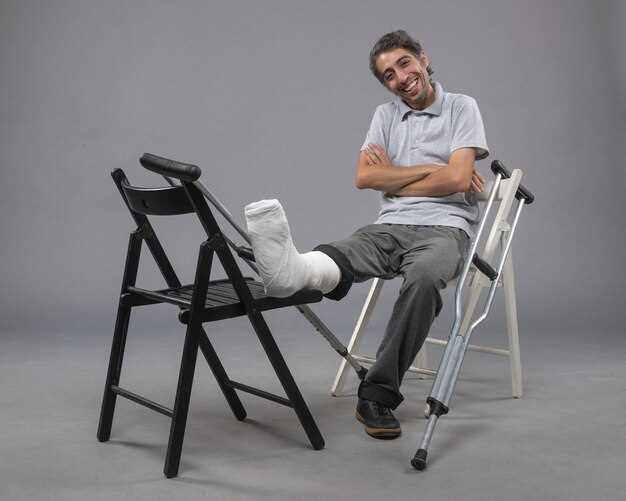
Are you concerned about the potential side effects of losartan? One common question that arises is whether losartan can lead to orthostatic hypotension. Let’s delve into the facts to separate myths from reality.
Definition of Orthostatic Hypotension

Orthostatic hypotension is a condition characterized by a sudden drop in blood pressure when a person stands up from a sitting or lying position. This can lead to symptoms such as dizziness, lightheadedness, and fainting. It is important to note that orthostatic hypotension is a common condition, especially in older adults, but it can also occur in younger individuals.
Symptoms of Orthostatic Hypotension
The symptoms of orthostatic hypotension may vary from person to person but commonly include:
- Dizziness
- Lightheadedness
- Blurred vision
- Fainting
- Weakness
These symptoms can be mild to severe and may occur suddenly when changing positions. It is essential to seek medical attention if you experience persistent or severe symptoms of orthostatic hypotension.
Definition and Symptoms
Orthostatic hypotension is a condition characterized by a sudden drop in blood pressure when a person stands up from a sitting or lying position. This drop in blood pressure can lead to symptoms such as dizziness, lightheadedness, blurred vision, weakness, and fainting. It occurs due to the inability of the body to regulate blood pressure effectively when changing positions.
Causes
There are several causes of orthostatic hypotension, including dehydration, heart conditions, nervous system disorders, medication side effects, and aging. Dehydration can reduce blood volume, making it harder for the body to maintain blood pressure. Heart conditions like heart failure or heart valve problems can affect the heart’s ability to pump blood effectively. Nervous system disorders, such as Parkinson’s disease or multiple system atrophy, can disrupt the body’s ability to regulate blood pressure. Some medications, like diuretics or alpha-blockers, can also cause orthostatic hypotension as a side effect. Additionally, as people age, their blood vessels may become less elastic, leading to a decreased ability to constrict and maintain blood pressure.
Causes and Risk Factors
Orthostatic hypotension can be caused by various factors, including dehydration, heart conditions, nervous system disorders, and certain medications. Losartan, commonly used to treat high blood pressure, may lead to orthostatic hypotension as a side effect.
Risk factors for developing orthostatic hypotension include age (older adults are more susceptible), dehydration, heart disease, diabetes, Parkinson’s disease, and medication use. Losartan users should be aware of the potential risk of experiencing orthostatic hypotension and consult their healthcare provider if they experience symptoms such as dizziness or lightheadedness when standing up.
Losartan and Hypotension
Losartan is a medication commonly prescribed to treat high blood pressure. One of the potential side effects of losartan is hypotension, or low blood pressure. Hypotension can occur when losartan causes the blood vessels to dilate, resulting in a decrease in blood pressure.
Losartan works by blocking the action of a hormone called angiotensin II, which normally causes blood vessels to constrict. By blocking angiotensin II, losartan allows the blood vessels to relax and widen, leading to a decrease in blood pressure. However, in some cases, this can result in orthostatic hypotension, a sudden drop in blood pressure when standing up.
Mechanism of Action
Losartan is an angiotensin II receptor blocker (ARB) that works by blocking the action of angiotensin II, a hormone that causes blood vessels to constrict. By blocking the effects of angiotensin II, losartan helps relax the blood vessels, which leads to a decrease in blood pressure. This mechanism of action not only helps in lowering blood pressure but also plays a role in managing orthostatic hypotension.
Managing Orthostatic Hypotension

Managing orthostatic hypotension involves a multi-faceted approach to help alleviate symptoms and improve quality of life. Here are some strategies that can be implemented:
- Fluid Intake: Increasing fluid intake can help prevent dehydration, which can contribute to low blood pressure. It is important to stay well-hydrated throughout the day.
- Salt Intake: Consuming slightly more salt than usual can help raise blood pressure and counteract the drop in blood pressure upon standing. However, it is important to consult a healthcare provider before making any dietary changes.
- Compression Stockings: Wearing compression stockings can help improve blood flow and prevent blood from pooling in the legs, which can reduce the risk of orthostatic hypotension.
- Gradual Changes in Position: Making slow, deliberate movements when changing positions can help prevent a sudden drop in blood pressure. It is important to sit up slowly and pause before standing up.
- Elevating the Head of the Bed: Elevating the head of the bed by a few inches can help prevent orthostatic hypotension during sleep by keeping blood circulating more effectively.
These strategies, along with regular monitoring and communication with a healthcare provider, can help effectively manage orthostatic hypotension and improve quality of life for those affected by this condition.
Introduction
Managing orthostatic hypotension is crucial for individuals taking medications like losartan that may cause a drop in blood pressure upon standing up. This section will provide practical tips on how to prevent and cope with episodes of orthostatic hypotension.
Tips for Managing Orthostatic Hypotension
| Tip | Description |
|---|---|
| 1. Slow Position Changes | When transitioning from lying down or sitting to standing, do so slowly. This helps minimize the sudden drop in blood pressure. |
| 2. Stay Hydrated | Drink an adequate amount of water throughout the day to maintain blood volume and prevent dehydration, which can worsen orthostatic hypotension. |
| 3. Elevate the Head of the Bed | Keeping the head of the bed elevated can reduce the risk of orthostatic hypotension upon waking up in the morning. |
| 4. Compression Stockings | Wearing compression stockings can help improve blood flow to the legs and reduce the pooling of blood in the lower extremities. |
| 5. Monitor Blood Pressure | Regularly check your blood pressure, especially when changing positions, to track any fluctuations and adjust treatment if necessary. |
| 6. Medication Adjustment | If orthostatic hypotension persists or worsens, consult your healthcare provider to discuss adjusting the dosage or type of medication causing the issue. |
| 7. Avoid Alcohol and Hot Environment | Avoid alcohol consumption and extreme heat as they can exacerbate orthostatic hypotension. |
By following these tips and working closely with your healthcare provider, you can effectively manage orthostatic hypotension while taking losartan or other blood pressure medications.
Lifestyle Changes
Adopting certain lifestyle changes can help in managing orthostatic hypotension. Some of the recommended changes include:
1. Drinking an adequate amount of water to maintain hydration levels.
2. Avoiding sudden changes in posture to prevent episodes of dizziness.
3. Gradually standing up from a seated or lying position to give the body time to adjust.
4. Wearing compression stockings to improve blood flow and prevent blood pooling in the legs.
5. Increasing salt intake under medical supervision to help raise blood pressure.
6. Engaging in regular physical activity to improve cardiovascular health and circulation.
7. Monitoring blood pressure regularly and consulting a healthcare provider for appropriate management.
By incorporating these lifestyle changes, individuals with orthostatic hypotension can effectively manage their condition and improve their quality of life.
